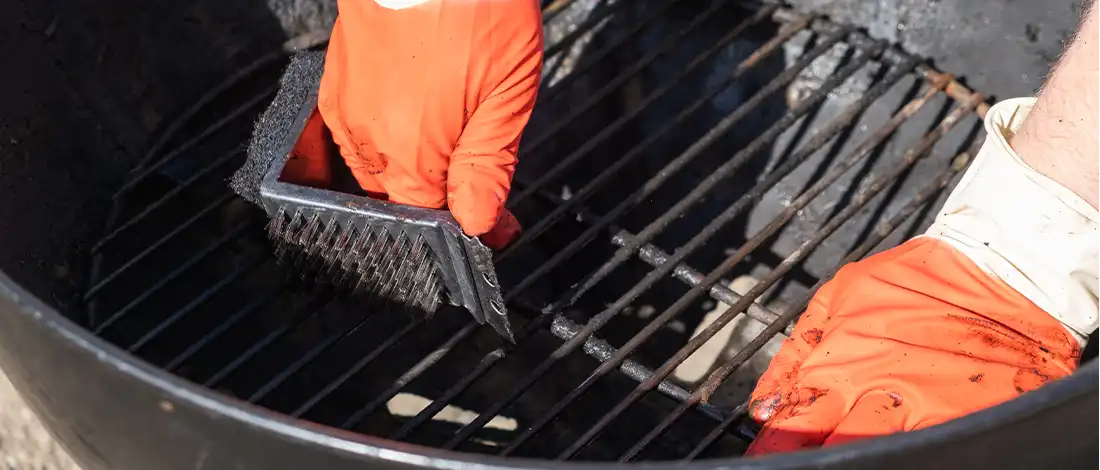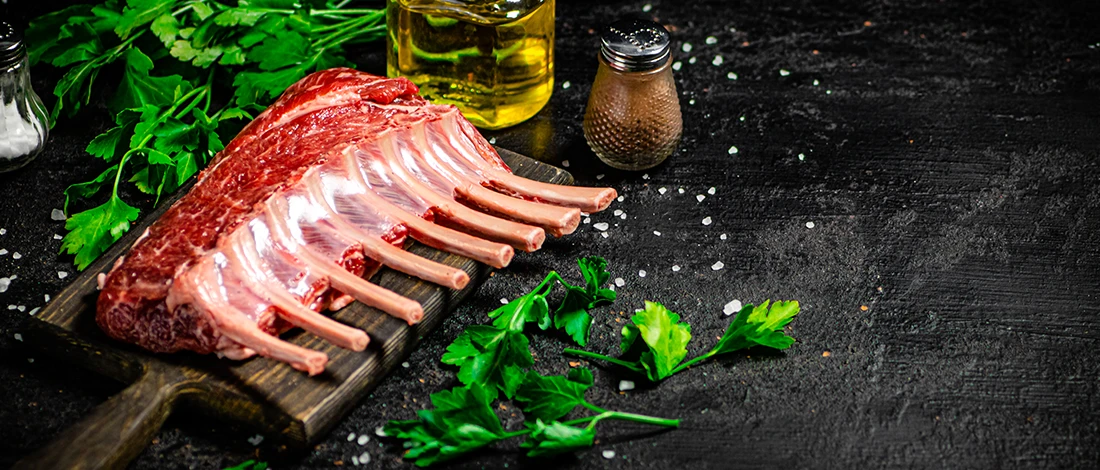I have over a decade of grilling experience, and although I’ve used all kinds of grills during this time, charcoals are my favorite.
I admit, it wasn’t love at first grill. It took me a lot of time and trial and error to learn how to operate them for the best grilling results.
One of the most common issues I faced with my charcoal grill was how to get it hotter.
I spent hours reading up on different ways to increase charcoal grill temperatures and talked with BBQ pitmasters to learn their tips and tricks.
I’ve experimented with different methods until I found what works best.
Here are eight proven ways to get your charcoal grill hot.
Quick Summary
- It’s more difficult to reach and maintain a high temperature on a charcoal grill than on a gas grill.
- You should keep your charcoal grill clean for the best longevity and cooking results.
- There are several ways to get the temperature high on a charcoal grill.
- Check our list of the best charcoal grills that do a wonderful job at maintaining high temperatures and providing great cooking results.
8 Tips on How to Make Your Charcoal Grill Hotter

You can make your charcoal grill hotter using different methods, such as trying different charcoals, adjusting the airflow, using a grill shield, a temperature probe, and more.
Here’s a detailed rundown of all ways to keep your charcoal grill hot.
1. Change Charcoals
Not all charcoals are equal, and the reason your charcoal grill can’t reach high temperature could be the charcoal brand you use.
There are two kinds of charcoal: lump and briquettes.
Briquettes heat faster, but they aren’t pure charcoal. They are made of burned sawdust, other particles, and a binding agent, so briquettes don’t generate as much heat as lumps.
Try lump charcoal instead. This charcoal is made of large blocks of pure carbon.
Lump charcoal has better performance when used in a charcoal grill and doesn’t create as much ash.
Another common charcoal issue is using old coal. For example, if you have an open bag of coals that’s been standing around for a while, this coal won’t light well.
Moreover, you’ll struggle to get the temperature as high as needed. If this is the case, you should also change the charcoal.
Pro tip: Buy smaller bags of coal, especially if you don’t grill often.
Don’t reuse charcoal partially burnt from previous grilling sessions, as the grill may not get hot enough. Plus, these coals burn out more quickly than fresh ones.
Finally, you have to check if your charcoal is wet. This happens if you leave the bag in a damp area or it gets exposed to the elements.
Even if the coals dry out, they won’t burn as hot as before, which is why you should change it.
2. Adjust Air Vents

Charcoal grills have air vents on the top and bottom. The bottom ones are more important for getting the cooking temperature to go up.
For example, Weber grills have three dampers on the bottom and one on the top of the lid.
You should keep all of them open when preheating the charcoal grills for the maximum amount of oxygen [1]. More oxygen means a higher temperature.
Overall, keep the dampers open, as fresh air increases the fire.
Charcoals can burn at a hotter temperature because there’s more oxygen.
Finally, ensure not to block the air vents with charcoal and wood grilling. The bottom damper is found around the fuel compartment, so charcoal can easily obstruct it.
Place the charcoals 1 inch from the damper. If it’s any closer, the charcoal can block the airflow, and your grill will cook at a lower temperature.
“Adjusting the air dampers will increase or decrease your temperature. The more air going into the grill, the hotter the grill will get. The less air going into your grill, the cooler it will get.”
- Weber, Premiere Manufacturer Grills
3. Clean the Grill
Another reason your charcoal grill can’t get hot is if it’s too dirty.
For example, if you didn’t remove the ashes from the previous grilling session, the ash can restrict the airflow inside the kettle, so the coals burn cooler.
You need to clean out ashes so the coals can burn hotter and also to keep the grill running for a long time.
You also have to clean the air vents. Use an old cloth, dip it with warm water and soap, and scrub off the ash and dirt clogging them.
Related Articles:
4. Create Indirect and Direct Heat Zones
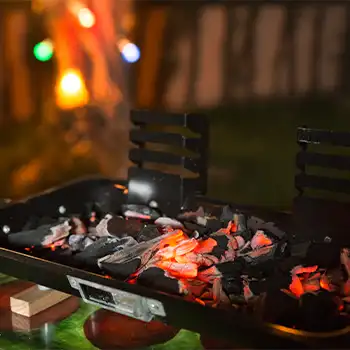
Another way to get your grill hotter is to create two heat zones.
Place all the coals on one side of the grill, light them up, and put the cooking grate back on the grill.
This way, you have a hot zone (direct heat) and a low heat zone (indirect heat).
You can cook food low and slow or sear it on the hot side.
You can easily move the food from one hot to a cool zone, which lets you control the heat over which the food cooks.
Pro tip: This is also a great way to turn a charcoal grill into a smoker.
5. Buy a Cast Iron Grate
Most charcoal grills have steel grates. These are lightweight, so the grill is more portable. However, these grates don’t get as hot as cast iron grates.
Cast iron is highly thermally conductive, so it easily absorbs and holds heat [2].
If you keep your charcoal grill stationary, I suggest investing in a cast iron grate.
These will get the grill hotter and maintain the grill temperature better.
6. Close the Lid
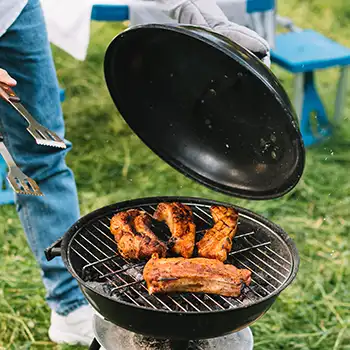
Another tip for increasing the grill temperature is to close the lid.
This way, the heat from the hot coals remains trapped inside.
On the other hand, if you often open the lid, the heat escapes.
My advice is to place the food on the grate, close the lid, and only open it when you need to flip the meat.
7. Position the Food
I talked about two heat zones. This is where food positioning is important.
The grill surface temperature is hotter on the direct heat side, so this is where you should place your food if you want to sear the exterior.
You can even place the food directly over the coals to get it charred.
Another tip is to lower the charcoal grate.
If you shorten the distance between the food and the fire, you’ll have a higher cooking temperature and a shorter cooking process.
8. Get a Temperature Probe
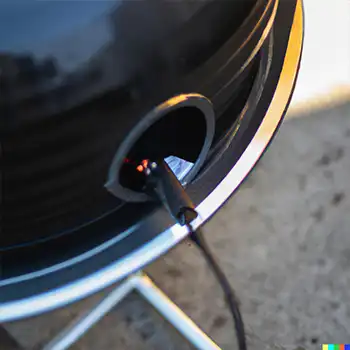
The final advice on getting your charcoal grill hotter is to use a temperature probe.
Most grills have a lid thermometer. While this is useful, it’s not enough.
This thermometer checks the grill’s ambient temperature and not the temperature of the cooking surface.
You should get a temperature probe to check the charcoal grill temperature accurately.
Then, it’s easy to know if you should adjust the grill time, open the vents, or place the food differently.
Also Read: How to Regulate the Temperature of a Charcoal Grill
FAQs
Does a Charcoal Grill Get Hotter With the Lid On or Off?
A charcoal grill gets hotter with the lid on because the hot air can’t escape the grill.
How Long Should Charcoal Burn Before Cooking?
Charcoal should burn between 15 to 20 minutes before cooking. However, this depends on the specific type of charcoal you have, so you should keep an eye on it.
Is It OK to Add Charcoal While Cooking?
Yes, it’s OK to add charcoal while cooking. You should do this by lighting charcoal with lighter fluid in a chimney starter and then transferring it to the barbecue.
References:
- https://www.weber.com/US/en/blog/burning-questions/how-to-control-the
- https://blog.thepipingmart.com/metals/cast-iron-vs-stainless-steel-whats-the-difference/

